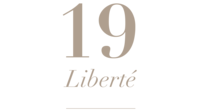April was a particularly turbulent month on the markets. On 2 April, Donald Trump unveiled his “reciprocal tariffs”. As much-vaunted as they are outlandish, these tariffs were introduced to supposedly rebalance an international trade system that the President claimed had weakened the United States for years.
As soon as the announcement was made, the market reaction was unequivocal. US equities fell by nearly 15% in just a few sessions, sending the flagship S&P500 index below 5,000 points for the first time since April 2024.
This wave of panic also moved across the bond market: in a few days, US 10-year sovereign yields rose from 4% to 4,48%. On the other hand, the German Bund played its stabilising role during the crisis, with the 10-year yield falling from 2,73% to 2,44%.
In the face of widespread fear, the US president was forced to take action by declaring a 90-day break for all US trading partners except China, which has not been exempted and will be subject to 145% tariffs.
The announced pause revived risk appetite: by the end of the month, the S&P500 had lost only -0,76% (in USD).
However, the negative currency effect affected the portfolios of European investors invested in the United States. At the end of the same period, the decline reported in euros was around 5%, with the exchange rate rising from 1,08 to 1,13.
For their part, European markets were not spared. They lost -1,20%, also in a two-stage movement: a slump followed by a rebound when the pause was announced.
The depreciation of the dollar against the euro has a twofold effect. Markets surged on the wave of the “end of US exceptionalism” accompanied by outflows from the US, particularly from European investors. At the same time, optimism is returning to Europe. While the economic impact of reciprocal tariffs is weighing on the economy, German stimulus announcements are improving the longer-term economic outlook, narrowing the growth gap observed between the US and Europe in recent years.
Although the pause is allowing the various US economic players to breathe for a bit, these tariff announcements are hurting them from an economic point of view. Indeed, households are now anticipating an uncertain future on the job market, and more inflation in the coming months. For companies, visibility is collapsing: they fear higher costs and falling demand, and appear to be freezing investment.
The effect on economic growth in the first quarter was inevitable: the US recorded annualised growth of -0,3%. Before the full application of reciprocal tariffs, companies imported record quantities of goods. As the contribution of imports to GDP is negative, the result is a first quarter of negative growth for the first time since 2022. However, there was good news in terms of consumption, which remains at an adequate level despite the headwinds.
In Europe, growth in the first quarter was satisfactory: quarterly growth reached 0,4%, or 1,2% on an annualised basis. That said, forecasts have been revised downwards for the expected impact of tariffs on both exports and investment.
Overall, equity markets do not seem to fully reflect the anticipated economic risks, particularly in terms of stagflation. For this reason, an underweight position in equities is recommended. High valuation levels coupled with still optimistic earnings growth expectations represent risks for the US markets. This is why, in regional terms, the preference is for European and emerging equities at the expense of US markets. Finally, from a sector point of view, Communications Services and European Real Estate were favoured.
On the bond front, European sovereign bonds are preferred over US bonds, where inflation risks are resurfacing due to tariffs. With regard to corporate debt, the preference is given to quality investment grade.
